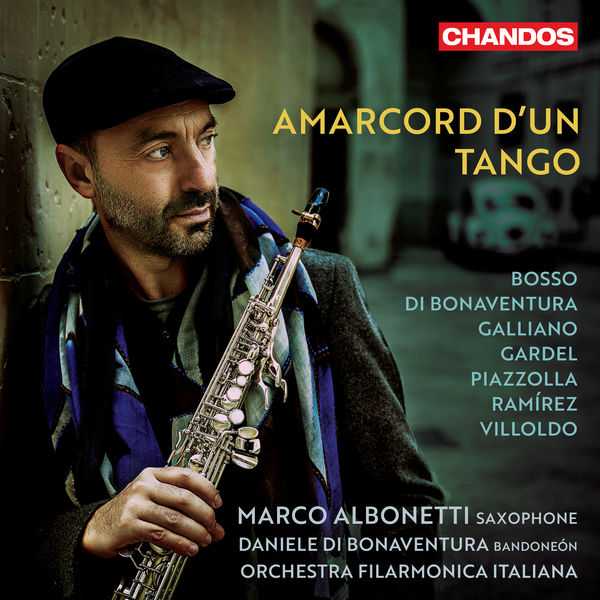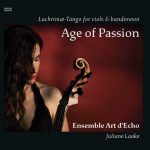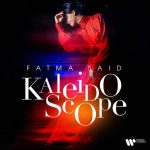

Composer: Angel Gregorio Villoldo Arroyo, Daniele Di Bonaventura, Jorge Andrés Bosso, Richard Galliano, Carlos Gardel, Astor Piazzólla, Ariel Ramirez
Performer: Marco Albonetti, Cesare Carretta, Annalisa Mannarini
Orchestra: Orchestra Filarmonica Italiana
Format: FLAC (tracks)
Label: Chandos
Catalogue: CHAN20259
Release: 2022
Size: 619 MB
Recovery: +3%
Scan: yes
01. Piazzólla: Triunfal
02. Gardel: Por Una Cabeza
03. Bonaventura: Sanctus
04. Ramirez: Alfonsina y el Mar
05. Arroyo: El Choclo
06. Gardel: Sus Ojos Se Cerraron
07. Piazzólla: Jardin d’Afrique
08. Galliano: Tango pour Claude
09. Bonaventura: Corale
10. Bonaventura: Tango
11. Bonaventura: Graduale
12. Piazzólla: Bruno y Sarah
13. Bosso: Tango’s Gedanke
“Amarcord” signifies memory, the nostalgic re-enactment of the past. Here, it evokes the idea of joining two instruments, the saxophone and the bandoneón, both of which were invented in the middle of the nineteenth century.
The bandoneón, created as a more agile substitute for the organ in the world of sacred music in Germany, was brought by German immigrants to Buenos Aires, where it became central to the tango, a music enlivened by rhythmic ideas from Africa and inextricably linked to dance. The saxophone – the central character of an adventure story which originated in Belgium, from which the instrument travelled to America where it discovered its promised land – executes the mellow melodies of the tango with a lightness, a pliancy, and a tone that further intensify the feelings running through them.
“Amarcord d’un tango” was created to offer the listener a brief journey through the history of the tango. Composed in 1903, Villoldo’s El choclo is one of the oldest examples of the genre. The well-known melodic tangos Por una cabeza and Sus ojos se cerraron are by the great singer Carlos Gardel, who died tragically in a plane accident, in 1935. The present recording includes also a homage to Astor Piazzolla, on the thirtieth anniversary of his death. The album opens with his Triunfal, the piece that, thanks to Nadia Boulanger, created awareness and spurred the metamorphosis of Piazzolla’s “nuevo tango” : it represents the ideal point of embarkation.



